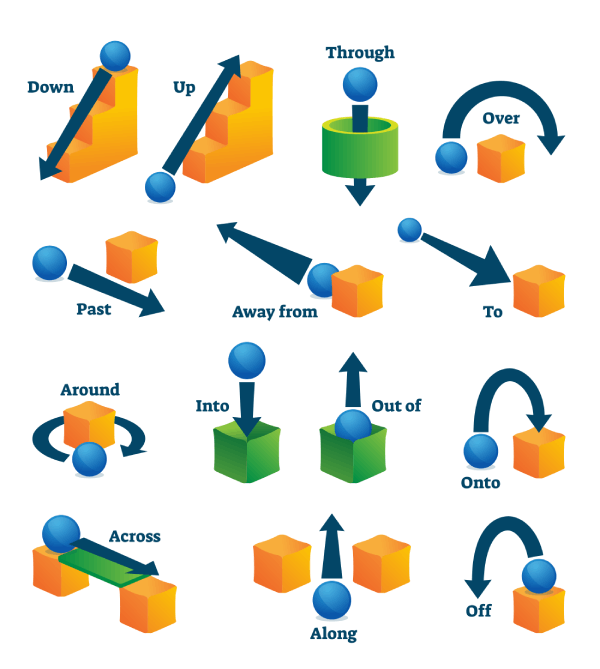English: Prepositions
Prepositions are words that link nouns, pronouns, or phrases to other words within a sentence. They act as connectors, indicating relationships between different elements, particularly in terms of time, place, direction, and manner. Prepositions are essential for providing context and clarity in sentences, helping to convey precise meanings.
Types of Prepositions
- Prepositions of Time:
Indicate when something happens.- Examples: "at" (specific times), "on" (days and dates), "in" (months, years, centuries, long periods).

- Examples: "at" (specific times), "on" (days and dates), "in" (months, years, centuries, long periods).
- Prepositions of Place:
Indicate where something is or where something happens.- Examples: "at" (point), "on" (surface), "in" (enclosed space).

- Examples: "at" (point), "on" (surface), "in" (enclosed space).
- Prepositions of Direction/Movement:
Show the direction or movement of something.- Examples: "to" (towards a place), "through" (going inside to the other side), "into" (entering).

- Examples: "to" (towards a place), "through" (going inside to the other side), "into" (entering).
- Prepositions of Manner:
Describe how something is done.- Examples: "by" (means of doing), "on" (method), "like" (manner).

- Examples: "by" (means of doing), "on" (method), "like" (manner).
- Prepositions of Agent or Instrument:
Indicate the cause or agent of an action.- Examples: "by" (agent), "with" (instrument).
Position in Sentences
- Prepositions typically precede a noun or pronoun to form a prepositional phrase, which can function as an adjective or adverb.
- Example: "The book on the table belongs to her." (Here, "on the table" is a prepositional phrase where "on" is the preposition and "the table" is the object of the preposition.)
Complex Prepositions
- Complex prepositions consist of two or more words that function as a single prepositional unit.
- Examples: "in front of," "because of," "according to."
Prepositional Phrases
- Prepositional phrases provide additional information about time, location, direction, or method.
- Example: "She sat in front of the computer."
Importance in Language
Prepositions are crucial for constructing coherent and meaningful sentences. They help in establishing clear relationships between different parts of a sentence, enhancing both the clarity and depth of communication. Mastery of prepositions and their correct usage is essential for effective language use, as
they often dictate the spatial, temporal, and logical relationships of elements within a sentence. Misuse of prepositions can lead to confusion or ambiguity, highlighting their importance in precise and accurate communication.
Challenges in Learning Prepositions
Prepositions can be challenging for language learners due to their varied uses and the lack of consistent rules governing their use. Often, the correct preposition usage is determined by convention rather than logic, and this can vary between different dialects of English. For instance, the subtle differences in usage, like "in time" versus "on time," or "at school" versus "in school," can change the meaning of a phrase.
Conclusion
Understanding prepositions and their correct application is a key aspect of language proficiency. They are not just functional words; they add layers of meaning and context to our sentences. Learning and mastering the use of prepositions enhances one's ability to communicate effectively and accurately, making them an indispensable part of language learning and usage.
English: Prepositions